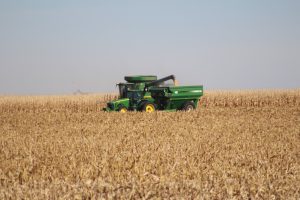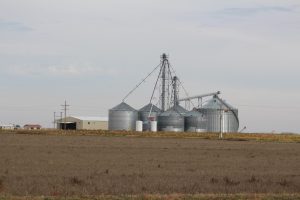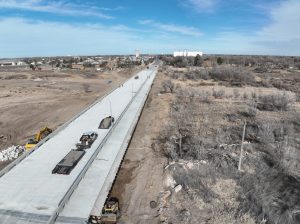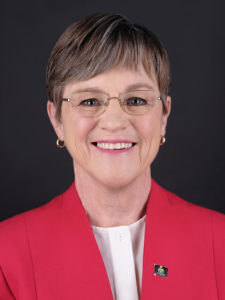Farmer sentiment improves; less pessimism over interest rates
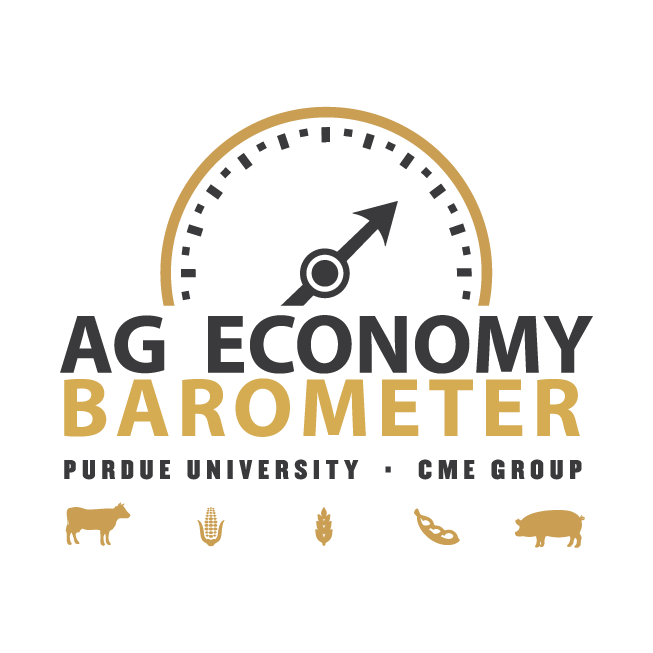
Farmer sentiment improved modestly in April as the Purdue University/CME Group Ag Economy Barometer rose 6 points to a reading of 123. Both of the barometer’s sub-indices were also higher in April, the Current Conditions Index was up 3 points to 129 and the Future Expectations Index was up 7 points to 120. The Ag Economy Barometer is calculated each month from 400 U.S. agricultural producers’ responses to a telephone survey. This month’s survey was conducted between April 10-14.
“Producers held a more optimistic view of the agricultural economy in April,” said James Mintert, the barometer’s principal investigator and director of Purdue University’s Center for Commercial Agriculture. “A shift in farmers’ expectations regarding the Fed’s future interest rate policy could be a key reason.”
The Farm Financial Performance Index also improved this month, up 7 points to a reading of 93. The prime interest rate charged by U.S. commercial banks increased from 7.75% in January to 8% in late March, and since the February barometer survey, there has been a noticeable shift in farmers’ interest rate expectations. In April, 34% of respondents said they expect the U.S. prime interest rate to remain unchanged or decline over the next year, compared to 25% of producers who felt that way in February. At the same time, two-thirds (66%) of producers expect interest rates to keep rising, compared to 75% of respondents who felt that way in February. However, the biggest shift was a decline in the percentage of respondents who expect rates to rise between 1% to 2% in the next year, down 6 points since February to 37%.
The Farm Capital Investment Index increased one point to a reading of 43 in April; yet more than 70% of respondents continue to feel now is a bad time for large investments. This month, 39% of respondents cited “rising equipment and construction costs” while 33% cited “rising interest rates” as the top reason for now being a bad time for such investments.
Producers’ expectations for short-term farmland values increased in April following five-straight months of decline. The Short-Term Farmland Value Expectations Index rose 10 points in April to a reading of 123, while the long-term farmland index held steady at a reading of 142. Even with this month’s rise, the short-term index remains 21 points lower than a year earlier and 36 points lower than two years ago.
Farm bill discussions are heating up, and this month’s survey included questions to learn more about producers’ perspectives on the legislation. When asked about the likelihood that a new farm bill will be passed this year, 12% of respondents think it’s very likely, 28% said somewhat likely, 16% said somewhat unlikely, and 13% said very unlikely. The survey also questioned corn and soybean producers on what they consider to be the most important aspect of a new farm bill. Of those respondents, 40% chose crop insurance, 31% chose commodity programs, 13% chose conservation, 8% chose agricultural research and extension, and 8% chose renewable energy as a top priority to them.
Leasing farmland for solar energy production continues to be a hot topic. In this month’s survey, 15% of respondents said that they had actively engaged in discussions with companies about leasing farmland for solar energy production in the past six months. Of those producers, nearly half indicated that lease rates of $1,000 or more per acre were discussed. Twenty-five percent of respondents said that, following the development and construction period, they were offered a lease rate of $1,250 or more per acre, while 22% of respondents said they were offered between $1,000 and $1,250 per acre. On the other end of the spectrum, 32% of respondents said they were offered lease rates of less than $500 per acre.



